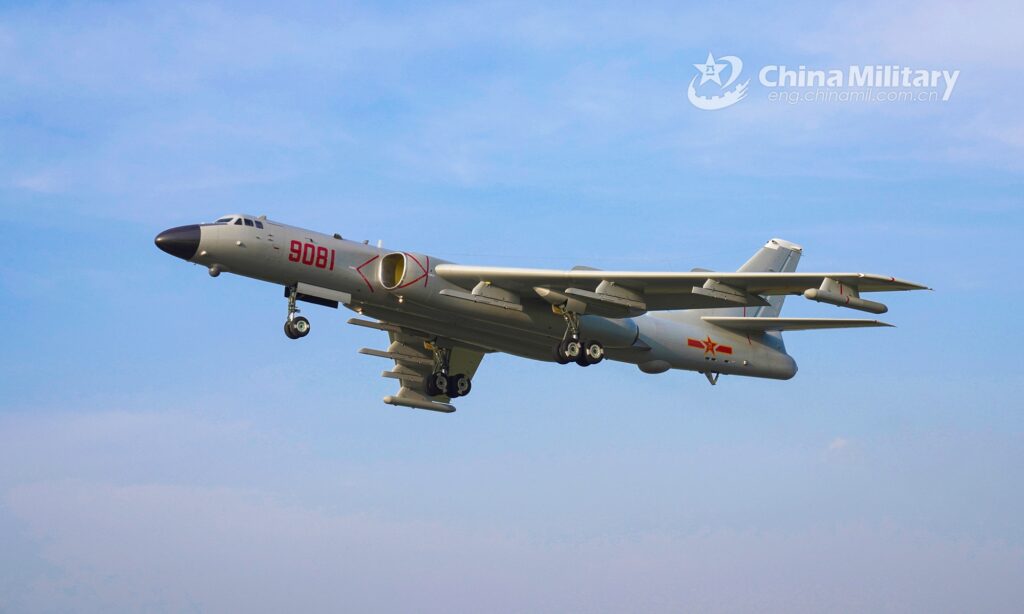The Chinese People’s Liberation Army (PLA) Navy’s newly revealed bomber, the H-6J, was recently deployed on Yongxing Island in the South China Sea for the first time, foreign media reported on Wednesday. The move will enable the PLA to suppress and jam provocative US military activities in the region, and its weapons load, potentially including anti-ship ballistic missiles, provides a huge deterrence to US aircraft carriers, experts said on Thursday.
At least one H-6J bomber was seen landed on Yongxing Island in an undated photo on foreign social media, US news outlet the Drive reported on Wednesday.
If confirmed, this will be the first time the bomber has been deployed on the island, the report said.
The H-6J bomber is one of China’s latest weapons, and was revealed only in July.
During July’s routine press conference by China’s Ministry of National Defense, spokesperson Senior Colonel Ren Guoqiang announced that H-6J bombers, together with its predecessors, H-6Gs, recently conducted intensive round-the-clock drills in the South China Sea, completing training exercises, including takeoffs and landings, long-distance strikes and attacks on surface targets.
Beijing-based naval expert Li Jie told the Global Times on Thursday that the H-6J bomber’s deployment in the South China Sea is of significance in terms of suppressing the US’ military provocations in the region, thanks to its outstanding naval combat capabilities.
High definition photos of the H-6J bomber, which were not taken on Yongxing Island, were revealed by media affiliated with the Chinese military in the past week.
Judging from the photos, the bomber is likely equipped with the new air-to-surface search radar on its nose, and has one extra electronic warfare pod on each side of its wings, Li said, noting that this will allow the H-6J to suppress and jam enemy planes and ships which operate electronic radar and communication devices.
Another distinctive feature of the H-6J bomber is its large weapons load against maritime targets, as it can carry six missiles under its wings, and potentially one more in its belly, Li said.
In addition to anti-ship cruise missiles like the YJ-12, the bomber can potentially also carry anti-ship ballistic missiles, Li predicted.
At Airshow China 2018 in Zhuhai, South China’s Guangdong Province, China revealed the made-for-export CM-401 anti-ship ballistic missile, which can be launched into a near-space trajectory, and is capable of hypersonic maneuverable flight. Upon reaching above its target, the CM-401 can conduct a terminal diving attack at extremely high velocity on medium to large vessels, vessel formations and port targets, according to a description at the air show.
This kind of missile could be a viable option for the H-6J, and the bomber, particularly flying in groups, can become a huge threat to hostile aircraft carrier groups, Li said.
The US military has been stirring up trouble in the region with dual aircraft carrier exercises in July, and frequent close-up reconnaissance with large reconnaissance aircraft on South China’s coastal regions from the South China Sea in the past few months.
An H-6K bomber, the H-6J’s Air Force counterpart, conducted takeoff and landing training on Yongxing Island in 2018, media reported at that time.
A H-6 strategic bomber attached to a bomber regiment of the naval aviation force under the PLA Southern Theater Command takes off for a recent realistic flight training exercise. (eng.chinamil.com.cn/Photo by Gao Hongwei)



